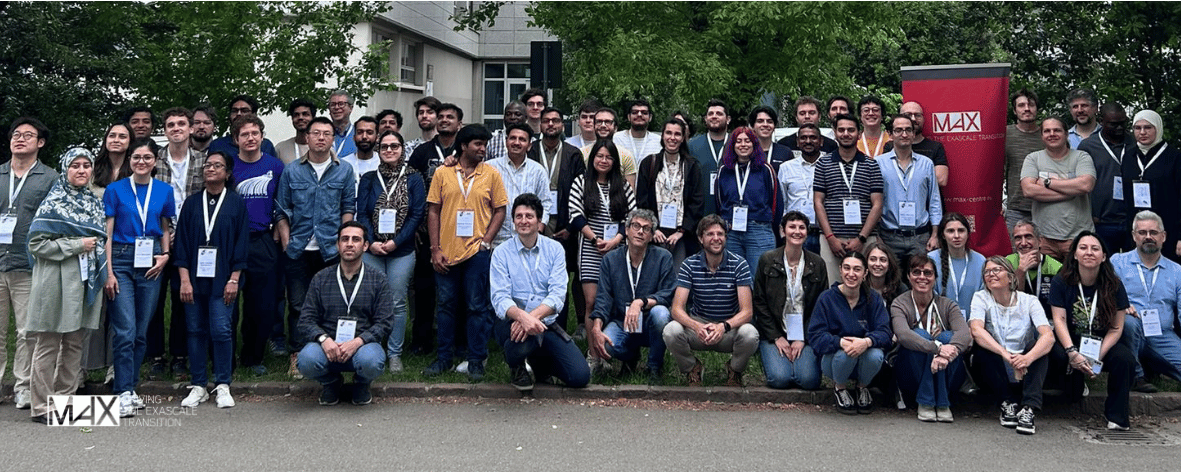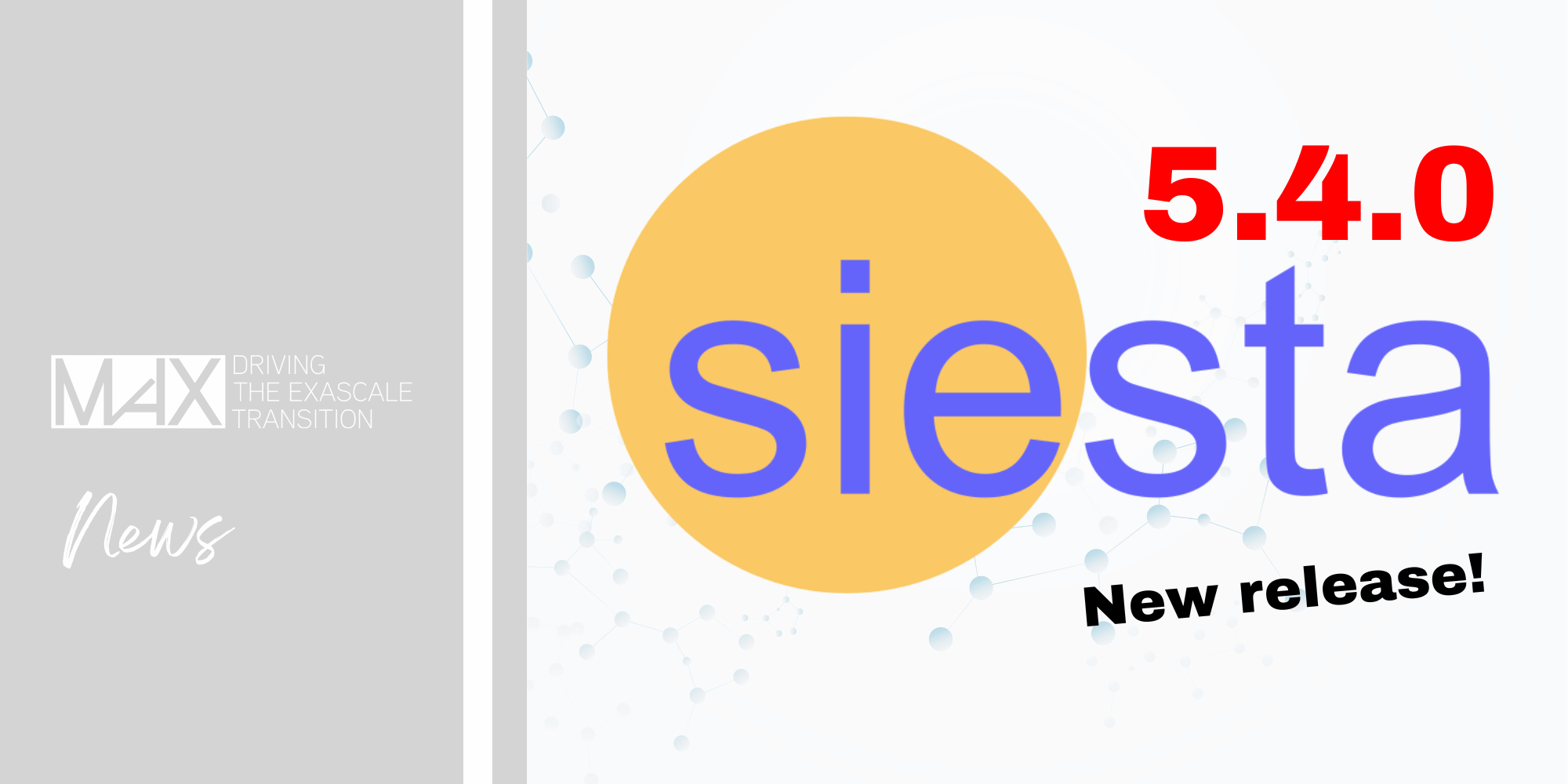MaX school: "Excited states in complex materials by MBPT methods"
From May 19–23, 2025, MaX Centre of Excellence held a school on excited states in complex materials using MBPT methods. The program focused on advanced simulations of light-matter interactions, key to future technologies.

MaX Centre of Excellence organized a school on “Excited states in complex materials by MBPT methods” tailored to researchers working on advanced computational methods to study light-matter interactions. These methods are essential for progress in technologies such as optoelectronics, quantum computing, and sustainable energy.
The school took place in Modena, heart of the Emilia-Romagna region: the perfect setting for a week of learning, discussion, and discovery.
During the school, attendees received both introductory and advanced lectures focused on many-body perturbation theory (MBPT), GW approximation, the Bethe-Salpeter equation (BSE), non-linear optics, and algorithms for studying two-dimensional systems and metals. The school offered a unique opportunity to deepen knowledge of theory while gaining practical experience in high-performance computing environments.
Hands-on sessions were a core part of the program, giving participants the chance to perform simulations using the YAMBO code. YAMBO is one of the MaX lighthouse software and a key part of national and European HPC research initiatives. Simulations were carried out on GPU-accelerated machines, giving attendees direct experience with modern computational platforms. In addition, participants learned post-processing and data analysis using YamboPy, a Python-based tool designed to complement YAMBO.
In addition to technical lectures and practical work, the school also featured a Poster Session and a User-driven Discussion, where participants presented their work and connected with experts in the field.
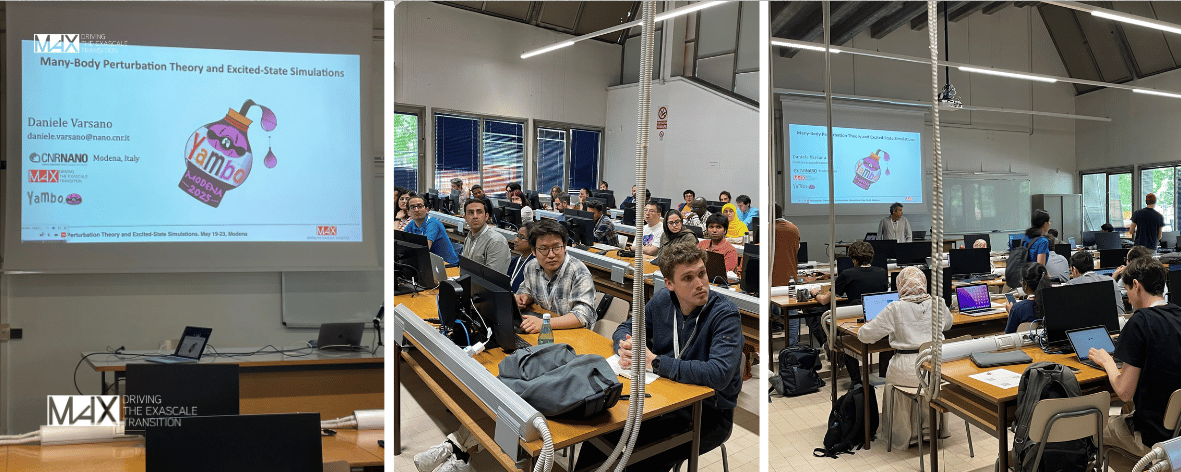
Day 1 Summary – Monday, May 19
The school opened with a welcome and overview by MaX partner and WP5 Leader Daniele Varsano. Lectures covered essential topics such as Density Functional Theory and linear response theory. The day ended with the first hands-on session using the YAMBO code and a gathering for participants to network and connect.

Day 2 Summary – Tuesday, May 20
Day two focused on quasiparticles and the GW approximation. Lectures introduced Many-Body Perturbation Theory and explored practical GW implementations. In the afternoon, participants applied their knowledge in hands-on sessions on linear response and YamboPy to gain practical insights into real-world applications.
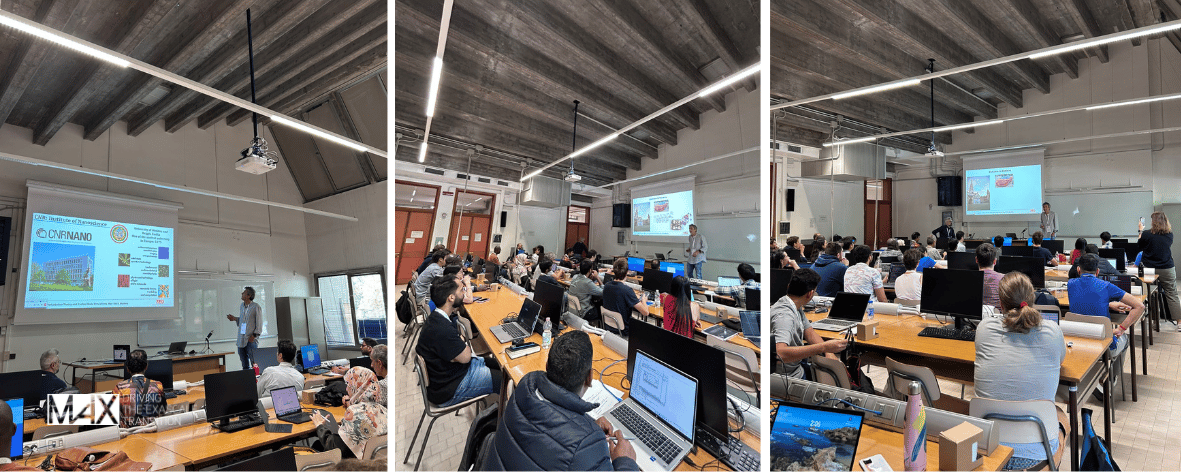
Day 3 Summary – Wednesday, May 21
The third day explored optical properties and real-time simulations. Lectures covered excitons through the Bethe-Salpeter Equation and the fundamentals of real-time approaches. A session on YamboPy for automation and post-processing was introduced in the morning. The rest of the day was dedicated to hands-on sessions focusing on the GW approximation and Bethe-Salpeter Equation, giving participants practical experience with simulations. The day concluded with a social dinner in the heart of Modena.
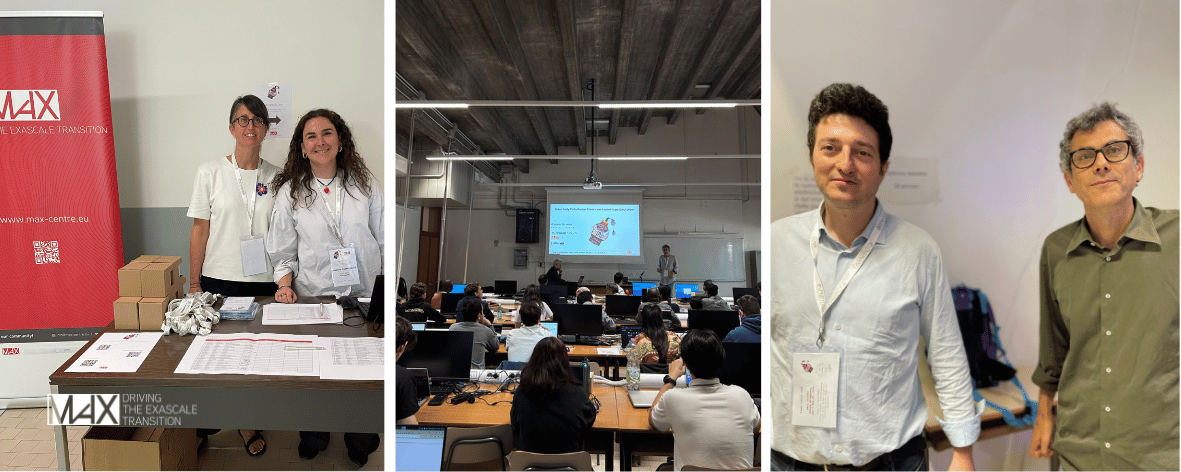
Day 4 Summary – Thursday, May 22
The program focused on non-linear spectroscopy and advanced computational topics. Lecturers introduced methods in non-linear optics and how these are implemented in YAMBO. The afternoon featured hands-on work with the Bethe-Salpeter Equation and non-linear response. The day ended with a poster session where participants shared their research, received feedback, and connected with peers and instructors.

Day 5 Summary – Friday, May 23
The final day was organized in parallel group sessions. Participants could choose topics such as YAMBO installation, running simulations on HPC systems, and using YamboPy for automation. The interactive format allowed attendees to dive deeper into their areas of interest. After a final wrap-up, the school officially concluded, leaving participants with new skills, insights, and connections for future collaborations.
____________________
Training material
School tutorials available at: Modena 2025 - The Yambo Project
Further information about the school: Yambo school – Modena 2025 – YAMBO CODE
